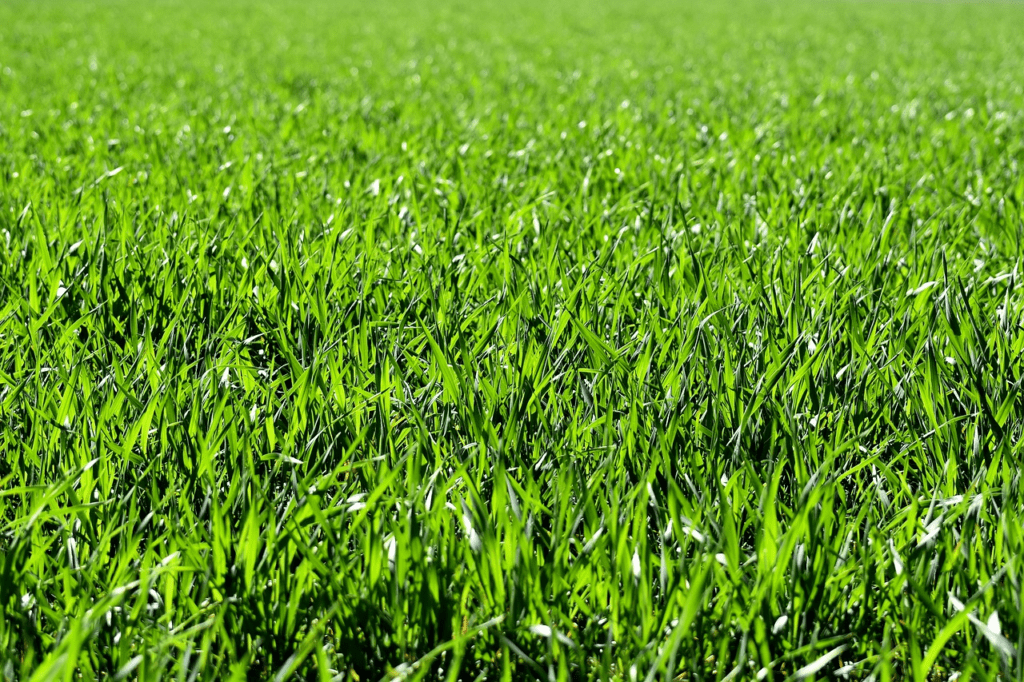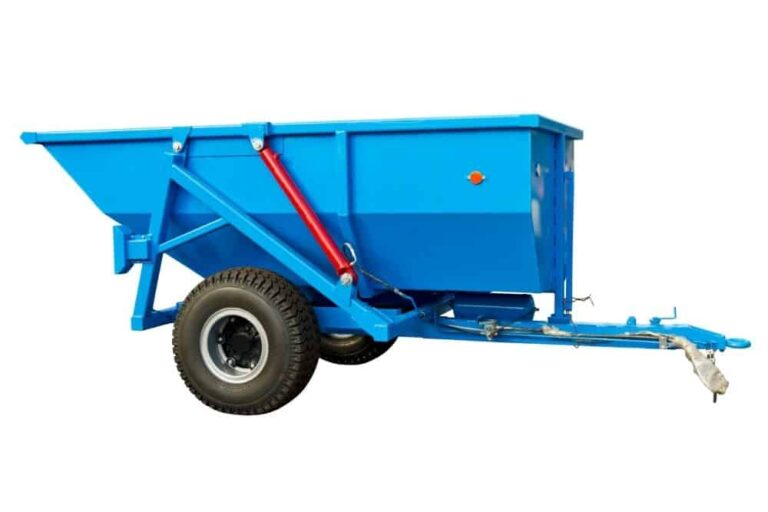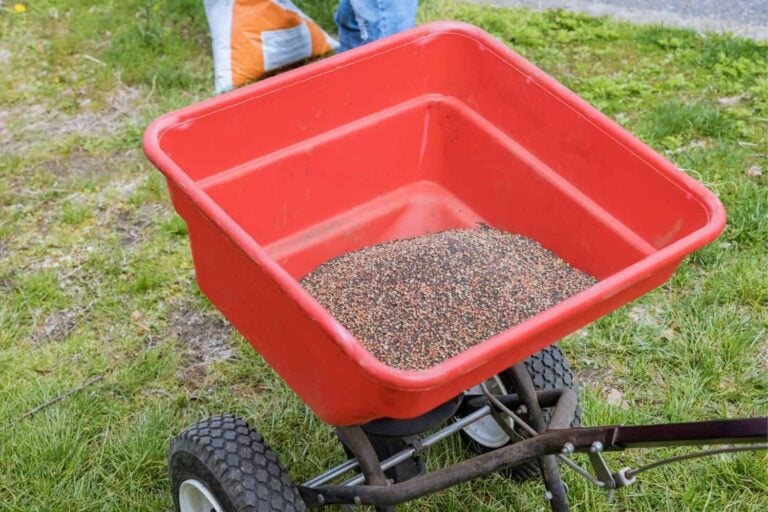Best Fertilizer for Grass: Great Tips for General Fertilizers and Specific Lawn Types
A lush, green lawn is a goal of many homeowners, and selecting the best fertilizer for grass is crucial to achieving this dream. With a vast array of options on the market, it can be overwhelming to determine the right product for your specific lawn needs. By understanding the basic components of lawn fertilizers and considering your grass type and the current state of your lawn, you can make an informed decision on which product will provide the desired results.

Lawn fertilizers typically contain three main nutrients: nitrogen, phosphorus, and potassium (N-P-K). These elements each serve a specific purpose in promoting healthy grass growth. Nitrogen encourages leafy growth and greening, while phosphorus helps with root development and potassium aids in overall plant health and disease resistance. It is essential to choose a fertilizer designed specifically for grass, as different plants may require varying nutrient ratios for optimal growth.
In addition to the N-P-K ratio, it’s important to consider the formulation of the fertilizer, such as slow-release, fast-release, or organic options. Factors such as the climate and soil conditions can also impact the effectiveness of the fertilizer. By considering these aspects and researching the best fertilizer for grass, you will be on your way to a beautiful, thriving lawn. If your looking for the best grass seed, be sure to check out this post.
Table of Contents
Understanding Lawn Fertilizer
When it comes to selecting the best fertilizer for grass, understanding the key nutrients and types of fertilizers available is essential. In this section, we will discuss the three primary nutrients in fertilizers: Nitrogen, Phosphorus, and Potassium (N-P-K), the differences between organic and synthetic fertilizers, and the pros and cons of granular and liquid fertilizers.
Nitrogen, Phosphorus, and Potassium (N-P-K)
These three elements are the primary nutrients that your lawn needs to thrive:
- Nitrogen (N): Promotes leafy growth and vibrant green color in your grass.
- Phosphorus (P): Supports root development and helps improve the overall health of your lawn.
- Potassium (K): Aids in disease resistance, drought protection, and cold tolerance.
Fertilizer labels typically display an N-P-K ratio which indicates the proportion of each nutrient present in the product. For example, a fertilizer with a ratio of 16-0-8 means it contains 16% Nitrogen, 0% Phosphorus, and 8% Potassium.
Organic vs Synthetic Fertilizers
Fertilizers can be broadly categorized into two types: organic and synthetic.
Organic Fertilizers are derived from natural sources such as plant or animal byproducts. Examples of organic fertilizers include Espoma EOLB30 Organic Lawn Booster Fertilize and Milorganite 0636 Organic Nitrogen Fertilizer. Organic fertilizers often provide slow-release nutrients and improve soil structure.
Synthetic Fertilizers are chemically manufactured and usually offer a quicker nutrient release. Examples include The Andersons Professional PGF 16-0-8 Fertilizer with Humic DG, which is a top-rated synthetic fertilizer product. While synthetic fertilizers can provide rapid results, they might require more frequent applications and, in some cases, can lead to environmental concerns.
Granular and Liquid Fertilizers
Fertilizers are available in two main forms: granular and liquid.
Granular Fertilizers are dry, solid pellets that are spread on the lawn using a spreader. They gradually release nutrients into the soil and are generally easier to handle and store. Granular fertilizers can be either slow-release or quick-release, depending on your lawn’s needs.
Liquid Fertilizers are water-soluble nutrients that are either sprayed onto the lawn or applied through an irrigation system. They provide immediate nutrient availability but might require more frequent applications. Liquid fertilizers are usually faster-acting and potentially better for emergency situations when your lawn needs a quick boost.
Understanding the key nutrients, organic vs. synthetic fertilizers, and the differences between granular and liquid fertilizers will help you make the best fertilizer for grass and your lawn’s long term health.
Choosing the Best Fertilizer for Grass by Types
To maintain a healthy and lush lawn, it’s essential to choose the right fertilizer for your specific grass type. There are two main categories of grasses: cool-season and warm-season. Each type requires a unique fertilizer blend to thrive.
Cool-Season Grasses
Cool-season grasses like fescue, Kentucky bluegrass, and rye typically grow well in northern regions. They exhibit rapid growth in the spring and fall and may turn brown in periods of high summer heat. It’s important to select a lawn fertilizer designed to support the nutritional needs of cool-season grass. Some of the best lawn fertilizers for these grasses are:
- A high-nitrogen blend: Nitrogen promotes growth and green color, making it essential for cool-season grasses.
- Balanced NPK ratio with added phosphorus (like 16-4-8): A higher phosphorus content aids in root development, particularly useful during cool-season grasses’ active growth periods.
- Slow-release or organic formulas: Slow-release fertilizers, such as Milorganite 0636 Organic Nitrogen Fertilizer, help provide a steady supply of nutrients over a more extended period. Organic alternatives, like Espoma EOLB30 Organic Lawn Booster Fertilize, are ideal for eco-friendly lawns.
Warm-Season Grasses
Warm-season grasses such as Bermuda, St. Augustine, centipede, and zoysia thrive in southern climates and tend to grow more during the warmer months. Similar to cool-season grasses, they also require specific fertilizers. Some recommended options for warm-season grasses include:
- A lower nitrogen ratio: Excessive nitrogen can damage warm-season grasses in hot temperatures. Opt for a fertilizer with a lower nitrogen ratio or a slow-release nitrogen source to supply nutrients gradually.
- Potassium-rich formulation (like 15-0-15): Potassium is essential for stress resistance, making it particularly crucial for warm-season grasses growing in heat-prone areas.
- Formulations with added micronutrients: Warm-season grasses such as St. Augustine and centipede often require extra micronutrients (iron, manganese, or zinc) to maintain their green color and overall health. Look for fertilizers that contain these essential elements.
Remember to always follow the manufacturer’s directions when applying fertilizers and conduct a soil test to determine your lawn’s specific nutrient needs. By selecting the best fertilizer for grass based upon your lawn type, you can ensure a healthy, vibrant, and resilient turf.
Fertilizing New vs Established Lawns
Starting a New Lawn
When starting a new lawn, either from sod or seed, the primary focus is on establishing a healthy root system which will support growth in the future. The best time to fertilize new grass is before you even spread the seed or lay sod. A soil test is essential to determine the lawn’s nutrient needs, and the appropriate fertilizer should be chosen based on these results. Application of a starter fertilizer with higher levels of nitrogen, phosphorus, and potassium is ideal for promoting root growth and establishing the new grass.
Maintaining an Established Lawn
For homeowners with established lawns, proper lawn maintenance includes regular fertilization throughout the growing season. Fertilizers specifically designed for established lawns can enhance growth without causing damage. Consider conducting a soil test to determine the nutrient requirements of the lawn, then select the best fertilizer for grass that meets those needs. It is also essential to apply fertilizers at the correct time and rate, according to the season and growth cycle. Light, routine applications are best for maintaining an established lawn’s health.
Overseeding and Lawn Repair
Overseeding is a common practice for lawn care, particularly in regions subjected to seasonal temperature changes. The process involves seeding an existing lawn to fill in damaged or thinning areas and promote overall growth. In this case, the choice of fertilizer should focus on:
- Promoting seedling growth
- Accelerating root growth
- Enhancing the overall health of the lawn
When repairing an existing lawn, consider using a balanced fertilizer with appropriate levels of nitrogen, phosphorus, and potassium. A slow-release fertilizer may work best for overseeding to provide a consistent supply of nutrients for an extended period.
Remember, the key to achieving a healthy lawn is understanding the unique needs and requirements of your specific grass type and soil conditions. This will help you choose the most suitable fertilizer for your new or established lawn, ensuring its continued growth and vitality.
Best Practices after choosing your lawn’s best fertilizer for grass
Timing and Frequency
The optimal time to fertilize your lawn depends on the type of grass and the climate in your area. For warm-season grasses like zoysia, it is best to fertilize in late spring or early summer when the grass starts growing rapidly, followed by a second application in late summer. On the other hand, cool-season grasses like fescue should be fertilized primarily in the fall and early spring.
Application Methods
There are several methods available for applying fertilizer to your lawn, each with its own advantages:
- Granular fertilizers: These can be applied with a broadcast or drop spreader. Granular fertilizers are further categorized into quick-release and slow-release types. Quick-release granular fertilizers provide immediate nutrients but require more frequent applications, while slow-release granular fertilizers provide nutrients over a longer period of time, reducing the frequency of applications.
- Liquid fertilizers: These require a hose-end or tank sprayer for application. Liquid fertilizers allow for better control over the amount of nutrients applied and provide a more uniform application. However, they also have a higher risk of over-fertilization and runoff, potentially harming waterways.
- Organic fertilizers: Options like feather meal provide natural nutrients to the soil while improving its structure. Organic fertilizers release nutrients slowly over time, reducing the risk of over-fertilization.
Regardless of the method chosen, always follow the directions on the fertilizer packaging to reduce the risk of incorrect application or harm to the environment.
Watering and Mowing After Fertilization
Watering your lawn after fertilization is essential to distribute the nutrients evenly and promote absorption into the soil. However, avoid overwatering to prevent nutrient runoff and protect nearby waterways. Wait to water until after the fertilizer has been applied and allow at least a few hours for absorption.
Similarly, it is important to avoid mowing the lawn immediately after fertilizing. Wait at least 24 hours for the fertilizer to settle and the grass to absorb the nutrients. Regular mowing, particularly of warm-season grasses, promotes a vibrant green color and can help prevent thatch buildup.
In summary, proper fertilization practices can significantly improve your lawn’s health and appearance. Consider the type of grass, climate, and application method to tailor your lawn’s fertilization schedule and promote growth, while also protecting your local environment.
Top Lawn Fertilizer Products and Brands
Scotts Turf Builder
Scotts Turf Builder is a popular choice among homeowners for fertilizing their lawns. This slow-release granular fertilizer is designed to promote even growth and greening while keeping the grass roots strong. Scotts offers various Turf Builder products tailored for specific grass types and seasonal needs, such as the Scotts Natural Lawn Food for organic options and the Scotts Liquid Turf Builder Lawn Food for quick absorption.
Greenview Fairway Formula Spring Fertilizer + Crabgrass Preventer
Greenview Fairway Formula Spring Fertilizer + Crabgrass Preventer is an excellent choice for both warm-season and cool-season grasses. This granular fertilizer offers a balanced NPK ratio and provides essential nutrients for early spring growth. It also includes a pre-emergent crabgrass control to keep lawns weed-free. The slow-release formula ensures consistent feeding for up to 12 weeks.
Milorganite
Milorganite is a sustainable, organic nitrogen fertilizer suitable for all grass types. It is made from heat-dried microbes that are beneficial to the soil and roots. Milorganite contains slowly-releasing iron, which enhances the green color of the lawn without the risk of burning. This fertilizer is environmentally friendly, making it a great choice for gardeners who prioritize sustainability.
Safer Brand Lawn Restore Fertilizer
Safer Brand Lawn Restore Fertilizer is an organic fertilizer that’s safe for the environment, pets, and children. It’s rich in nitrogen, which promotes fast greening and supports root growth. The lawn food contains soil-friendly ingredients, such as bone meal and other minerals, to enhance overall soil health. Using this product helps maintain a strong and vibrant lawn throughout the growing season.
Environmental Considerations and Eco-Friendly Options
Organic Lawn Fertilizers
Organic lawn fertilizers are a popular choice for homeowners interested in environmentally friendly options. These fertilizers are made from organic materials such as meat meal, blood meal, and other natural ingredients that help to nourish soil microbes and contribute to healthy soil structure. Furthermore, organic fertilizers often contain beneficial nutrients like iron, calcium, and humic dg to support the growth of lush, green lawns.
One such organic fertilizer is Espoma EOLB30 Organic Lawn Booster, which is OMRI (Organic Materials Review Institute) listed. This means that it meets strict organic standards set by the institute. Other options include Greenview Fairway Formula Spring Fertilizer + Crabgrass Preventer, known for its effectiveness against weed invasions.
Reducing Phosphorus Use and Algal Blooms
Phosphorus is a key nutrient for grass growth, but excessive amounts can lead to issues such as algal blooms in nearby rivers and lakes. An eco-friendly approach to lawn care involves using fertilizers that are low in phosphorus or contain no phosphorus at all. This decreases the risk of dangerous algal blooms, which can cause major disruption to aquatic ecosystems.
In addition to choosing low-phosphorus fertilizers, homeowners can take additional measures to ensure that their lawn care practices align with environmental concerns. A few things to consider include:
- Regularly testing soil pH to maintain an optimal balance
- Applying granular fertilizers according to manufacturer’s instructions to avoid nutrient runoff
- Keeping grass at a healthy height to discourage weed growth and promote disease resistance
By adopting a more environmentally-conscious approach to lawn care, homeowners can enjoy a beautiful and healthy green space that is also eco-friendly.



